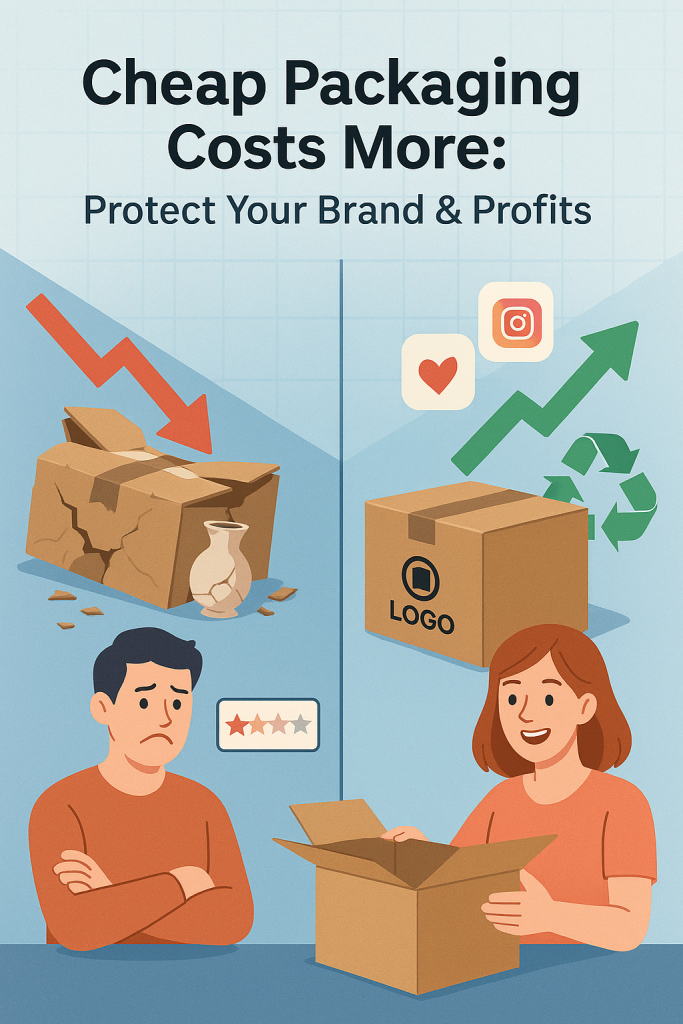1. Introduction
1.1 Overview of Paper Packaging
Paper packaging has long been a cornerstone of the consumer goods industry, providing a versatile, sustainable solution for transporting and protecting products. Its inherent biodegradability and recyclability make it a preferred choice for eco-conscious consumers and businesses alike. From simple brown paper
bags to sophisticated multi-layered designs, paper packaging serves a myriad of functions across various sectors.
1.2 Importance of Innovation in Packaging
With growing environmental concerns, the packaging industry must innovate to meet stringent sustainability goals and evolving consumer demands. Continuous advancements in paper packaging are essential to enhancing functionality, reducing waste, and minimizing the ecological footprint, ensuring that this traditional material remains relevant in a modern, eco-conscious world.
2. Historical Perspective
2.1 Early Uses of Paper Packaging
The history of paper packaging dates back to ancient China, where paper was first invented around 105 AD. Initially used for writing and wrapping delicate goods, its utility soon extended to packaging, providing protection and transport for various items. This early application set the stage for paper’s integral role in packaging solutions.
2.2 Evolution Over the Decades
The 20th century marked significant advancements in paper packaging, with the introduction of corrugated cardboard revolutionizing shipping and storage. Innovations such as waxed paper and paperboard enhanced durability and versatility, leading to widespread adoption across industries. The evolution continued with the development of multi-layered packaging and coatings that improved functionality and performance.
3. Current Trends in Paper Packaging
3.1 Sustainability
Sustainability is the primary driver of modern packaging innovations. Companies are increasingly investing in renewable materials and processes to reduce environmental impact while maintaining product integrity. This includes the use of recycled fibers, renewable sources, and eco-friendly production techniques.
3.2 Customization
Customization has become a key trend, with businesses seeking to differentiate their products through unique packaging designs. Personalized packaging enhances consumer engagement, reflects brand identity, and can cater to specific market segments, making products more appealing and memorable.
3.3 Lightweight Solutions
Innovations in lightweight paper packaging aim to reduce shipping costs and carbon emissions. Advanced materials and design techniques allow for lighter packaging without compromising strength and durability, benefiting both businesses and the environment by minimizing resource usage and waste.
4. Advanced Materials in Paper Packaging
4.1 Biodegradable Coatings
Biodegradable coatings are emerging as a vital component in sustainable packaging. These coatings provide necessary protection while ensuring that the packaging can decompose naturally, reducing waste and environmental pollution. They are particularly beneficial for food packaging, where safety and sustainability are paramount.
4.2 Recyclable Laminates
Recyclable laminates enhance the durability of paper packaging while ensuring compatibility with existing recycling systems. This innovation merges functionality with environmental responsibility, enabling packaging to withstand various conditions while remaining eco-friendly.
4.3 Plant-Based Inks
The shift to plant-based inks in printing on paper packaging reduces reliance on petroleum-based products. These inks are non-toxic, decompose more readily, and align with sustainable practices, contributing to the overall eco-friendliness of paper packaging.
5. Technological Innovations
5.1 Smart Packaging
Smart packaging incorporates technologies such as QR codes, NFC tags, and sensors, offering consumers interactive experiences and real-time information about product origins, safety, and sustainability. This innovation not only enhances consumer engagement but also improves transparency and trust.
5.2 Nanotechnology Applications
Nanotechnology is being leveraged to improve barrier properties in paper packaging. By enhancing resistance to moisture, oxygen, and other contaminants, nanotechnology extends the shelf life of perishable goods, ensuring product quality and safety.
5.3 Enhanced Barrier Properties
Developments in barrier properties are critical for protecting products from external factors. Innovations include moisture-resistant coatings and oxygen barriers, essential for industries such as food and pharmaceuticals where product integrity is crucial.
6. Sustainable Practices
6.1 Recycling Innovations
Recycling innovations are key to creating a circular economy. Advanced sorting technologies and improved recycling processes increase the efficiency and quality of recycled paper materials, ensuring that paper packaging remains a viable and sustainable option.
6.2 Energy-Efficient Production
Adopting energy-efficient production methods reduces the carbon footprint of paper packaging manufacturing. Techniques such as low-temperature drying and the use of renewable energy sources are becoming more prevalent, contributing to sustainability goals.
6.3 Waste Reduction Techniques
Implementing waste reduction techniques, such as minimalistic packaging designs and reusable components, helps decrease the amount of waste generated. These practices not only support environmental goals but also appeal to consumers who prioritize sustainability.
7. Industry Applications
7.1 Food and Beverage
The food and beverage industry greatly benefits from innovations in paper packaging. Biodegradable and compostable materials ensure safety and reduce environmental impact, meeting consumer expectations for sustainable and safe packaging solutions.
7.2 E-commerce
In the rapidly growing e-commerce sector, durable and lightweight paper packaging is essential to ensure products arrive intact. Customization and sustainability are key factors driving innovation, providing both functional and environmentally friendly packaging options.
7.3 Pharmaceuticals
Pharmaceutical packaging requires stringent standards to maintain product integrity. Paper packaging solutions with enhanced barrier properties and tamper-evident features meet these requirements while supporting sustainability, addressing the industry’s unique needs.
8. Consumer Preferences
8.1 Eco-Friendly Packaging
Eco-friendly packaging is increasingly preferred by consumers. Brands adopting sustainable paper packaging can enhance their market appeal and build customer loyalty by demonstrating environmental responsibility, a significant factor in consumer decision-making.
8.2 Aesthetic Appeal
Aesthetic appeal plays a crucial role in attracting consumers. Innovative printing techniques and design capabilities in paper packaging create visually appealing products that stand out on shelves and online, making a strong impression on potential buyers.
8.3 Functional Design
Functional design in paper packaging enhances the user experience. Features such as easy-open mechanisms, resealable options, and ergonomic designs contribute to consumer satisfaction and product usability, making packaging not only attractive but also practical.
9. Regulatory Environment
9.1 Global Standards
Adherence to global standards ensures that paper packaging meets international quality and safety requirements. Regulations from organizations like ISO and FSC guide the industry towards sustainable practices, promoting consistency and reliability in packaging solutions.
9.2 Regional Policies
Regional policies significantly influence the adoption of innovative packaging solutions. For example, the European Union’s stringent environmental regulations drive advancements in sustainable materials and recycling processes, pushing the industry towards greener practices.
9.3 Compliance Challenges
Navigating varying regional regulations presents compliance challenges for companies. Adapting to different standards and requirements necessitates forward-thinking strategies and innovative solutions to ensure global compliance and market access.
10. Case Studies
10.1 Leading Brands Adopting Innovations
Leading brands like Coca-Cola and Unilever are at the forefront of adopting innovative paper packaging solutions. These companies set industry benchmarks for sustainability and functionality, demonstrating the viability and benefits of advanced paper packaging technologies.
10.2 Startups Disrupting the Market
Startups such as Notpla and Loliware are disrupting the market with groundbreaking paper packaging technologies. Their innovative approaches challenge traditional methods and push the boundaries of what’s possible, driving the industry forward.
11. Future Prospects
11.1 Emerging Technologies
Emerging technologies, including bio-based materials and 3D printing, hold significant promise for the future of paper packaging. These innovations could revolutionize production processes and material efficiency, offering new possibilities for sustainable and functional packaging solutions.
11.2 Potential Market Growth
The market for paper packaging is poised for significant growth as sustainability becomes a priority for consumers and businesses alike. Increased demand for eco-friendly packaging and supportive regulatory environments will drive this expansion.
11.3 Long-Term Sustainability
Achieving long-term sustainability in paper packaging hinges on continuous innovation and industry collaboration. Embracing new technologies and practices will enable the industry to meet environmental goals and deliver lasting benefits.
12. Conclusion
12.1 Summary of Key Points
Innovations in paper packaging technology are transforming the industry. Sustainability, consumer demand, and regulatory pressures are driving advancements in materials, smart packaging, and sustainable practices, ensuring that paper packaging remains a vital and eco-friendly solution.
12.2 The Path Forward for Paper Packaging
The future of paper packaging lies in embracing innovation, fostering industry collaboration, and maintaining a steadfast commitment to sustainability. As technology continues to advance, the possibilities for eco-friendly and functional packaging solutions will expand, paving the way for a more sustainable future.








